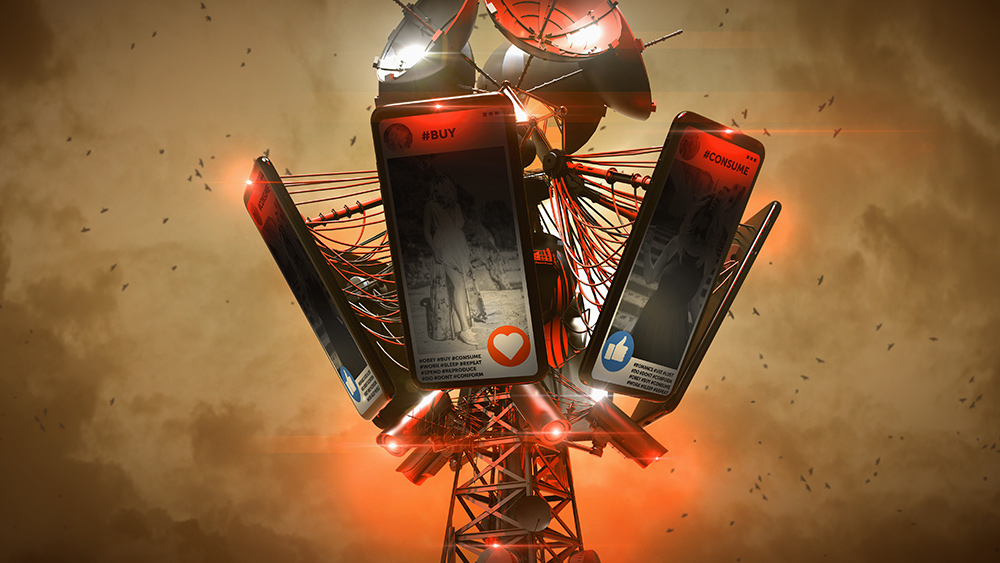
5G has also prompted the concern of many people, mainly because it relies on millimeter waves to work. The millimeter wavelength, or mmWave, falls within the Extremely High-Frequency band of the electromagnetic spectrum, which has wavelengths between 30 to 300 gigahertz (GHz). mmWave can generate a “pencil-beam” focused signal to any target device, penetrating clothing and causing searing pain.
With that kind of technology, there's absolutely no reason to think that mmWave will be used only for communications. To wit, the military developed a new weapon, called the Active Denial System (ADS), using mmWave.
Weaponizing mmWave: the Active Denial System
The ADS is a non-lethal, directed-energy weapon developed by the Air Force Research Laboratory and the Department of Defense's Joint Non-Lethal Weapons Program (JNLWP). It's used to repel enemy troops, disperse hostile crowds, suppress sniper activity and create a defensive barrier.
The weapon works by firing bursts of electromagnetic energy at a frequency of 95 GHz, which falls well within the mmWave spectrum. It penetrates the clothes and enters the skin at a depth of one sixty-fourth an inch, producing an overwhelming burning sensation. When a human target is struck with a beam of the ADS, the person will be forced to walk away in response to the searing heat.
According to ADS designers, the ADS can cause burning sensations on the skin of people standing as far as 700 yards away without actually burning them.
"It's a heat-induced sensation. You walk out of the beam, and the pain goes away. There are no lasting effects," said then-Director of the JNLWP George P. Fenton in 2001, when the weapon was still being developed.
mmWave technology not safe for use
Despite the military's safety claims, however, there had been two recorded cases where ADS exposure resulted in second-degree burns. The first incident occurred in January 1999 and stemmed from a laboratory mishap. The patient formed a quarter-size blister and was placed in outpatient care. Meanwhile, in a 2007 training exercise, an airman was injured after being overexposed to the ADS due to procedural errors.
What's more, while the ADS is touted as non-lethal, the technology has the potential to be deadly if exposure to it is sustained and prolonged many times over the duration required to achieve the repel effect.
When the weapon was still being developed, there had already been a lot of skeptics who weren't quite accepting of the military's safety claims.
In 2001, political commentator and former U.S. Army soldier William M. Arkin compared the ADS with a ''high-powered microwave antipersonnel weapon.'' Arkin, who had been an advisor to the Office of the Secretary of Defense and the Central Intelligence Agency, underscored the need for more studies, especially regarding the effects of the ADS on children, pregnant women and the elderly.
He added that past efforts by the Pentagon to develop nonlethal weapons had often led to disastrous results. Lasers, for instance, were once widely considered the peacekeeping tool of the future until they were proven capable of blinding people.
Before the ADS gets rolled out, Arkin said, ''they are going to have to prove some things to us first.'' (Related: Have you ever asked yourself what the possible dangers of 5G could be?.)
Such intense scrutiny should also apply to 5G. While research about its harmful effects is still ongoing, people arguing on its side have not exactly come up with anything conclusive about why it's safe. What's even more worrying is the fact that 5G requires putting up a base station every few hundred meters or so. This network densification means that people will be exposed to mmWave almost round the clock, putting them at risk of the consequences of mmWave exposure that scientists are yet to uncover.
Find out how 5G harms humans at EMF.news.
Sources include:
Please contact us for more information.























